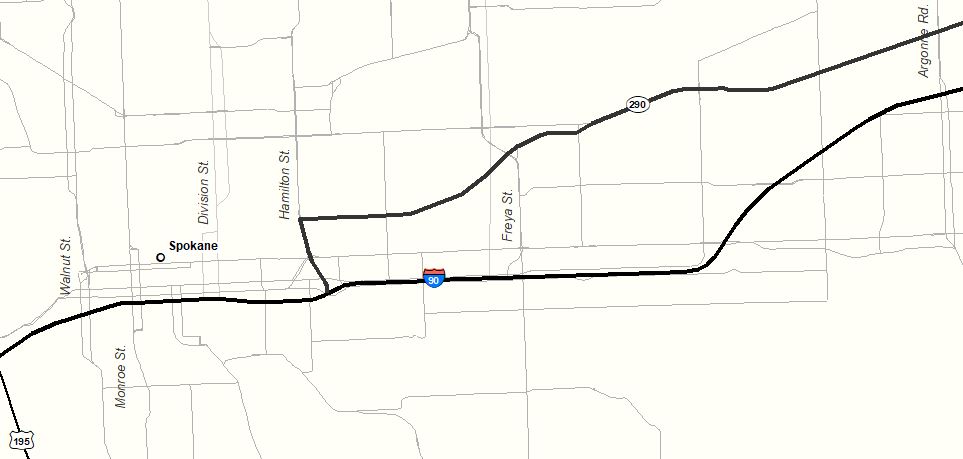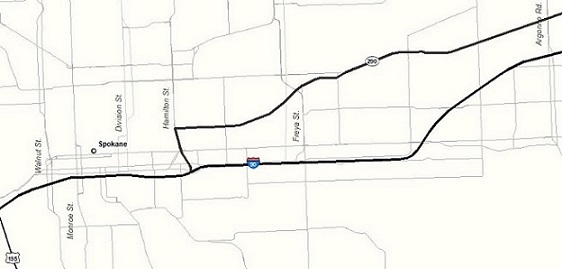Multimodal mobility dashboard - Spokane region
Region executive summary
This dashboard provides a detailed multimodal mobility analysis of the Interstate 90 corridor in the Spokane area, one of the region's key commute and economic corridors. The peak periods for the I-90 corridor in the Spokane region are 7-10 a.m. and 3-6 p.m.
2024 Highlights- In 2024, the average daily person miles traveled increased from 2023 due to the continued recovery of traffic volume across the state in the wake of COVID-19. Approximately 274.2 million person miles were traveled on the I-90 corridor in Spokane in 2024, up 1.9% from 268.9 million person miles in 2023
- Vehicle delay on the I-90 corridor in Spokane increased 21.3% from 56,000 hours in 2023 to 68,000 hours in 2024
- In 2024, buses moved up to 0.8% of travelers compared to 2023, where buses moved up to 0.7% travelers during weekday commutes in the Spokane region.
- Park and ride lots in this corridor had an average utilization rate of 8.8% in 2024 compared to 9.4% in 2023. None of these park and ride lots reached or exceeded a utilization rate of 85%, which is the threshold for being considered at full capacity.

Source: WSDOT Transportation Safety and Systems Analysis Division and WSDOT TRACFLOW (https://tracflow.wsdot.wa.gov/)
Interstate 90
Interstate 90 (I-90) in the Spokane area is one of the region's key commute and economic corridors. Almost 274 million person miles were traveled on I-90 between Division Street and Argonne Road in 2024. Select the green bar below for more Interstate 90 multimodal mobility analysis information.

Multi-year trends
Due to historic decreases in 2020 during the COVID-19 pandemic, analysis here is compared to 2019 to provide a better perspective on whether trends are returning to normal (Unless otherwise noted travel is measured in general purpose lanes).
- There were 274.2 million person miles traveled in 2024 which was 3.2% higher than the 265.7 million in 2019
- Vehicle delay in 2024 was 68,000 hours, which was 6.8% less than the 73,000 hours in 2019
- Peak morning and evening commute times continued to increase in 2024 and were equal to or surpassed 2019 commute times in some locations
- Severe congestion levels continued to grow in 2024, and neared pre-pandemic levels.
- In 2024, throughput loss returned to pre-pandemic levels, closely resembling productivity declines of 2019
- Buses in 2024 transported less than 0.8% of weekday commuters, compared to 2019, where buses moved up to 2.8%
- Park and ride lot usage in 2024 averaged 8.8% compared to 82.4% in 2019
